10.3: Erosion and Deposition by Gravity
- Page ID
- 2587
\( \newcommand{\vecs}[1]{\overset { \scriptstyle \rightharpoonup} {\mathbf{#1}} } \)
\( \newcommand{\vecd}[1]{\overset{-\!-\!\rightharpoonup}{\vphantom{a}\smash {#1}}} \)
\( \newcommand{\id}{\mathrm{id}}\) \( \newcommand{\Span}{\mathrm{span}}\)
( \newcommand{\kernel}{\mathrm{null}\,}\) \( \newcommand{\range}{\mathrm{range}\,}\)
\( \newcommand{\RealPart}{\mathrm{Re}}\) \( \newcommand{\ImaginaryPart}{\mathrm{Im}}\)
\( \newcommand{\Argument}{\mathrm{Arg}}\) \( \newcommand{\norm}[1]{\| #1 \|}\)
\( \newcommand{\inner}[2]{\langle #1, #2 \rangle}\)
\( \newcommand{\Span}{\mathrm{span}}\)
\( \newcommand{\id}{\mathrm{id}}\)
\( \newcommand{\Span}{\mathrm{span}}\)
\( \newcommand{\kernel}{\mathrm{null}\,}\)
\( \newcommand{\range}{\mathrm{range}\,}\)
\( \newcommand{\RealPart}{\mathrm{Re}}\)
\( \newcommand{\ImaginaryPart}{\mathrm{Im}}\)
\( \newcommand{\Argument}{\mathrm{Arg}}\)
\( \newcommand{\norm}[1]{\| #1 \|}\)
\( \newcommand{\inner}[2]{\langle #1, #2 \rangle}\)
\( \newcommand{\Span}{\mathrm{span}}\) \( \newcommand{\AA}{\unicode[.8,0]{x212B}}\)
\( \newcommand{\vectorA}[1]{\vec{#1}} % arrow\)
\( \newcommand{\vectorAt}[1]{\vec{\text{#1}}} % arrow\)
\( \newcommand{\vectorB}[1]{\overset { \scriptstyle \rightharpoonup} {\mathbf{#1}} } \)
\( \newcommand{\vectorC}[1]{\textbf{#1}} \)
\( \newcommand{\vectorD}[1]{\overrightarrow{#1}} \)
\( \newcommand{\vectorDt}[1]{\overrightarrow{\text{#1}}} \)
\( \newcommand{\vectE}[1]{\overset{-\!-\!\rightharpoonup}{\vphantom{a}\smash{\mathbf {#1}}}} \)
\( \newcommand{\vecs}[1]{\overset { \scriptstyle \rightharpoonup} {\mathbf{#1}} } \)
\( \newcommand{\vecd}[1]{\overset{-\!-\!\rightharpoonup}{\vphantom{a}\smash {#1}}} \)
\(\newcommand{\avec}{\mathbf a}\) \(\newcommand{\bvec}{\mathbf b}\) \(\newcommand{\cvec}{\mathbf c}\) \(\newcommand{\dvec}{\mathbf d}\) \(\newcommand{\dtil}{\widetilde{\mathbf d}}\) \(\newcommand{\evec}{\mathbf e}\) \(\newcommand{\fvec}{\mathbf f}\) \(\newcommand{\nvec}{\mathbf n}\) \(\newcommand{\pvec}{\mathbf p}\) \(\newcommand{\qvec}{\mathbf q}\) \(\newcommand{\svec}{\mathbf s}\) \(\newcommand{\tvec}{\mathbf t}\) \(\newcommand{\uvec}{\mathbf u}\) \(\newcommand{\vvec}{\mathbf v}\) \(\newcommand{\wvec}{\mathbf w}\) \(\newcommand{\xvec}{\mathbf x}\) \(\newcommand{\yvec}{\mathbf y}\) \(\newcommand{\zvec}{\mathbf z}\) \(\newcommand{\rvec}{\mathbf r}\) \(\newcommand{\mvec}{\mathbf m}\) \(\newcommand{\zerovec}{\mathbf 0}\) \(\newcommand{\onevec}{\mathbf 1}\) \(\newcommand{\real}{\mathbb R}\) \(\newcommand{\twovec}[2]{\left[\begin{array}{r}#1 \\ #2 \end{array}\right]}\) \(\newcommand{\ctwovec}[2]{\left[\begin{array}{c}#1 \\ #2 \end{array}\right]}\) \(\newcommand{\threevec}[3]{\left[\begin{array}{r}#1 \\ #2 \\ #3 \end{array}\right]}\) \(\newcommand{\cthreevec}[3]{\left[\begin{array}{c}#1 \\ #2 \\ #3 \end{array}\right]}\) \(\newcommand{\fourvec}[4]{\left[\begin{array}{r}#1 \\ #2 \\ #3 \\ #4 \end{array}\right]}\) \(\newcommand{\cfourvec}[4]{\left[\begin{array}{c}#1 \\ #2 \\ #3 \\ #4 \end{array}\right]}\) \(\newcommand{\fivevec}[5]{\left[\begin{array}{r}#1 \\ #2 \\ #3 \\ #4 \\ #5 \\ \end{array}\right]}\) \(\newcommand{\cfivevec}[5]{\left[\begin{array}{c}#1 \\ #2 \\ #3 \\ #4 \\ #5 \\ \end{array}\right]}\) \(\newcommand{\mattwo}[4]{\left[\begin{array}{rr}#1 \amp #2 \\ #3 \amp #4 \\ \end{array}\right]}\) \(\newcommand{\laspan}[1]{\text{Span}\{#1\}}\) \(\newcommand{\bcal}{\cal B}\) \(\newcommand{\ccal}{\cal C}\) \(\newcommand{\scal}{\cal S}\) \(\newcommand{\wcal}{\cal W}\) \(\newcommand{\ecal}{\cal E}\) \(\newcommand{\coords}[2]{\left\{#1\right\}_{#2}}\) \(\newcommand{\gray}[1]{\color{gray}{#1}}\) \(\newcommand{\lgray}[1]{\color{lightgray}{#1}}\) \(\newcommand{\rank}{\operatorname{rank}}\) \(\newcommand{\row}{\text{Row}}\) \(\newcommand{\col}{\text{Col}}\) \(\renewcommand{\row}{\text{Row}}\) \(\newcommand{\nul}{\text{Nul}}\) \(\newcommand{\var}{\text{Var}}\) \(\newcommand{\corr}{\text{corr}}\) \(\newcommand{\len}[1]{\left|#1\right|}\) \(\newcommand{\bbar}{\overline{\bvec}}\) \(\newcommand{\bhat}{\widehat{\bvec}}\) \(\newcommand{\bperp}{\bvec^\perp}\) \(\newcommand{\xhat}{\widehat{\xvec}}\) \(\newcommand{\vhat}{\widehat{\vvec}}\) \(\newcommand{\uhat}{\widehat{\uvec}}\) \(\newcommand{\what}{\widehat{\wvec}}\) \(\newcommand{\Sighat}{\widehat{\Sigma}}\) \(\newcommand{\lt}{<}\) \(\newcommand{\gt}{>}\) \(\newcommand{\amp}{&}\) \(\definecolor{fillinmathshade}{gray}{0.9}\)INTRODUCTION
Gravity shapes the Earth’s surface by moving weathered material from a higher place to a lower one. This occurs in a variety of ways and at a variety of rates including sudden, dramatic events as well as slow steady movements that happen over long periods of time. The force of gravity is constant and it is changing the Earth’s surface right now.
TYPES OF MOVEMENT CAUSED BY GRAVITY
Movements caused by gravity are together referred to as mass wasting or mass movement. Weathered material may fall away from a cliff because there is nothing to keep it in place. Rocks that fall to the base of a cliff make a talus slope (figure 1). Sometimes as one rock falls, it hits another rock, which hits another rock, and begins a landslide.
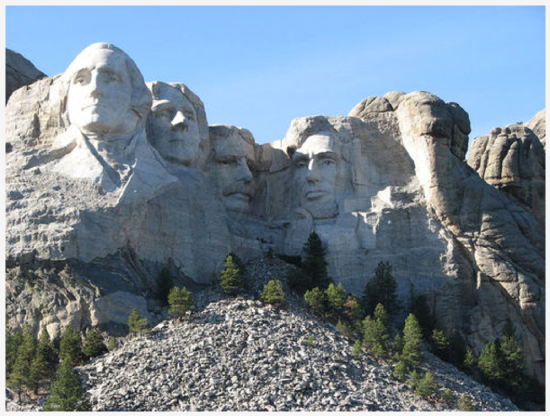
Figure 1. Pieces of rock regularly fall to the base of cliffs to form talus slopes
Landslides and Avalanches
Landslides and avalanches are the most dramatic, sudden, and dangerous examples of earth materials moved by gravity. Landslides are sudden falls of rock, whereas avalanches are sudden falls of snow.
- Here is a video of a snow avalanche.
When large amounts of rock suddenly break loose from a cliff or mountainside, they move quickly and with tremendous force (figure 2). Air trapped under the falling rocks acts as a cushion that keeps the rock from slowing down. Landslides and avalanches can move as fast as 200 to 300 km/hour.
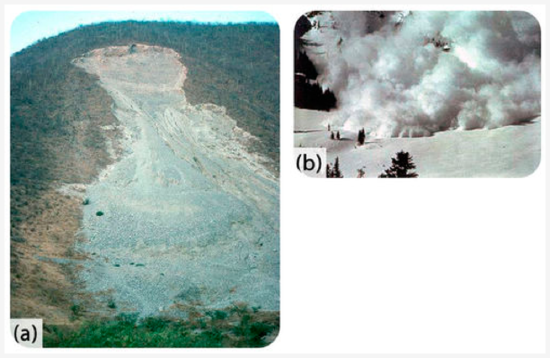
Figure 2. (a) Landslides are called rock slides by geologists. (b) A snow avalanche moves quickly down slope, burying everything in its path.
Landslides are exceptionally destructive. Homes may be destroyed as hillsides collapse. Landslides can even bury entire villages. Landslides may create lakes when the rocky material dams a stream. If a landslide flows into a lake or bay, they can trigger a tsunami (figure 3).
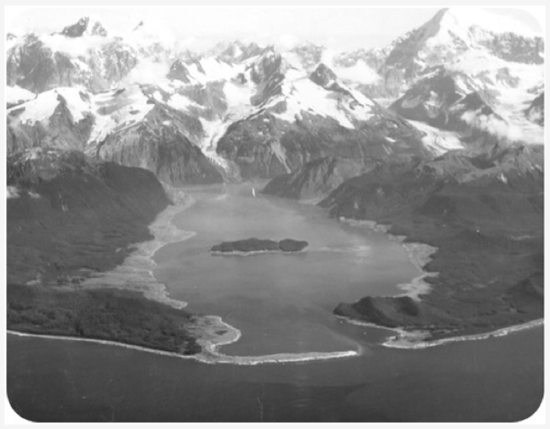
Figure 3. The 1958 landslide into Lituya Bay, Alaska, created a 524m tsunami that knocked down trees at elevations higher than the Empire State Building (light gray).
Landslides often occur on steep slopes in dry or semi-arid climates. The California coastline, with its steep cliffs and years of drought punctuated by seasons of abundant rainfall, is prone to landslides. At-risk communities have developed landslide warning systems. Around San Francisco Bay, the National Weather Service and the U.S. Geological Survey use rain gauges to monitor soil moisture. If soil becomes saturated, the weather service issues a warning. Earthquakes, which may occur on California’s abundant faults, can also trigger landslides.
- Here is a video of rapid downslope movement of material.
KQED: Landslide Detectives
Hillside properties in the San Francisco Bay Area and elsewhere may be prone to damage from landslides. Geologists are studying the warning signs and progress of local landslides to help reduce risks and give people adequate warnings of these looming threats. You can learn more here.
Mudflows and Lahars
Added water creates natural hazards produced by gravity (figure 4). On hillsides with soils rich in clay, little rain, and not much vegetation to hold the soil in place, a time of high precipitation will create a mudflow. Mudflows follow river channels, washing out bridges, trees, and homes that are in their path.
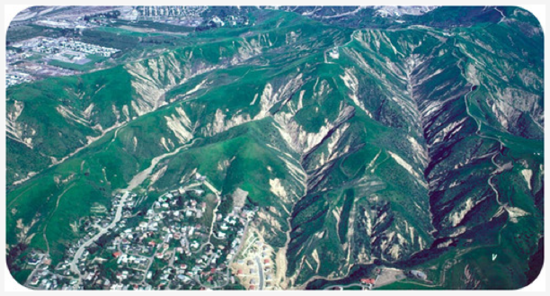
Figure 4. The white areas on green hillsides mark scars from numerous mudflows.
- This video shows a debris flow.
A lahar is mudflow that flows down a composite volcano (figure 5). Ash mixes with snow and ice melted by the eruption to produce hot, fast-moving flows. The lahar caused by the eruption of Nevado del Ruiz in Columbia in 1985 killed more than 23,000 people.
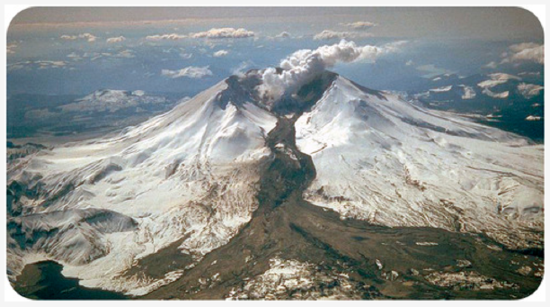
Figure 5. A lahar is a mudflow that forms from volcanic ash and debris.
Slump and Creep
Less dramatic types of downslope movement move earth materials slowly down a hillside. Slump moves materials as a large block along a curved surface (figure 6). Slumps often happen when a slope is undercut, with no support for the overlying materials, or when too much weight is added to an unstable slope.
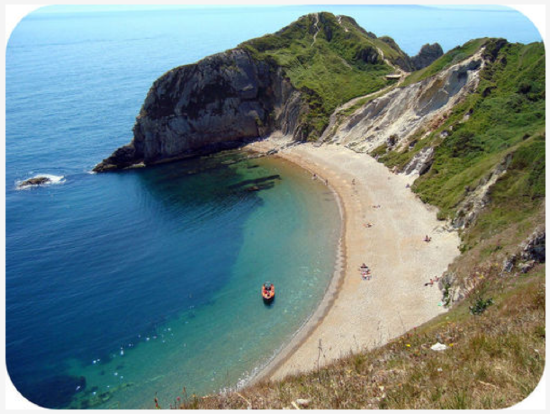
Figure 6. Slump material moves as a whole unit, leaving behind a crescent shaped scar.
Creep is the extremely gradual movement of soil downhill. Curves in tree trunks indicate creep because the base of the tree is moving downslope while the top is trying to grow straight up (figure 7). Tilted telephone or power company poles are also signs of creep.
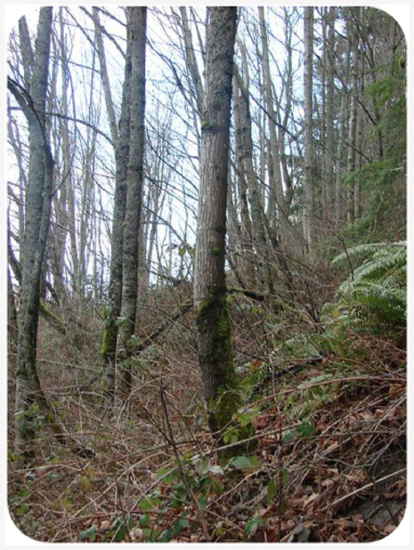
Figure 7. Trees with curved trunks are often signs that the hillside is slowly creeping downhill.
Contributing Factors
There are several factors that increase the chance that a landslide will occur. Some of these we can prevent and some we cannot.
Water
A little bit of water helps to hold grains of sand or soil together. For example, you can build a larger sand castle with slightly wet sand than with dry sand. However too much water causes the sand to flow quickly away. Rapid snow melt or rainfall adds extra water to the soil, which increases the weight of the slope and makes sediment grains lose contact with each other, allowing flow.
Rock Type
Layers of weak rock, such as clay, also allow more landslides. Wet clay is very slippery, which provides an easy surface for materials to slide over.
Undercutting
If people dig into the base of a slope to create a road or a homesite, the slope may become unstable and move downhill. This is particularly dangerous when the underlying rock layers slope towards the area (figure 8).
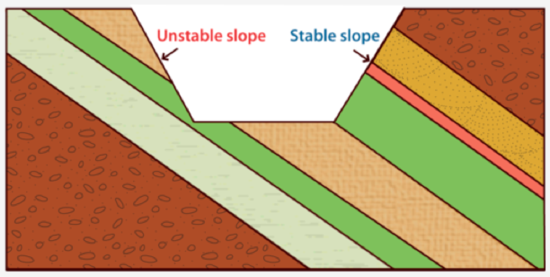
Figure 8. The slope of underlying materials must be considered when making road cuts.
- Ocean waves undercut cliffs and cause landslides on beaches as in this video.
When construction workers cut into slopes for homes or roads, they must stabilize the slope to help prevent a landslide (figure 9). Trees roots or even grasses can bind soil together. It is also a good idea to provide drainage so that the slope does not become saturated with water.
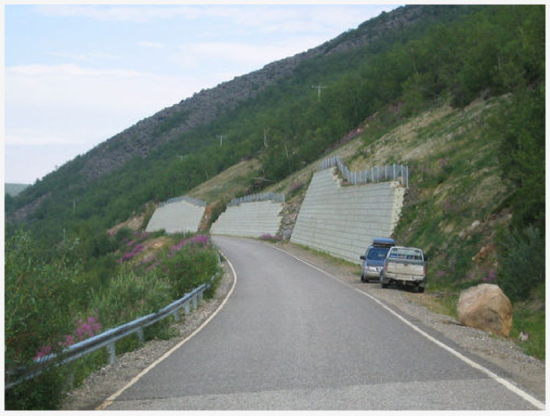
Figure 9. A rock wall stabilizes a slope that has been cut away to make a road.
Ground Shaking
An earthquake, volcanic eruption, or even just a truck going by can shake unstable ground loose and cause a slide. Skiers and hikers may disturb the snow they travel over and set off an avalanche.
A very good introduction to the topic, “Landslide 101,” is a video seen on National Geographic Videos, Environment Video, Natural Disasters, Landslides, and more.
PREVENTION AND AWARENESS
Landslides cause $1 billion to $2 billion damage in the United States each year and are responsible for traumatic and sudden loss of life and homes in many areas of the world. To be safe from landslides:
- Be aware of your surroundings and notice changes in the natural world.
- Look for cracks or bulges in hillsides, tilting of decks or patios, or leaning poles or fences when rainfall is heavy. Sticking windows and doors can indicate ground movement as soil pushes slowly against a house and knocks windows and doors out of alignment.
- Look for landslide scars because landslides are most likely to happen where they have occurred before.
- Plant vegetation and trees on the hillside around your home to help hold soil in place.
- Help to keep a slope stable by building retaining walls. Installing good drainage in a hillside may keep the soil from getting saturated.
LESSON SUMMARY
- Gravity moves earth materials from higher elevations to lower elevations.
- Landslides, avalanches, and mudflows are examples of dangerous erosion by gravity.
- Slump and creep move material slowly downslope.
- Plants, retaining walls, and good drainage are ways to help prevent landslides.
REFLECTION QUESTIONS
- What skill does this content help you develop?
- What are the key topics covered in this content?
- How can the content in this section help you demonstrate mastery of a specific skill?
- What questions do you have about this content?
Contributors and Attributions
Original content from Kimberly Schulte (Columbia Basin College) and supplemented by Lumen Learning. The content on this page is copyrighted under a Creative Commons Attribution 4.0 International license.

